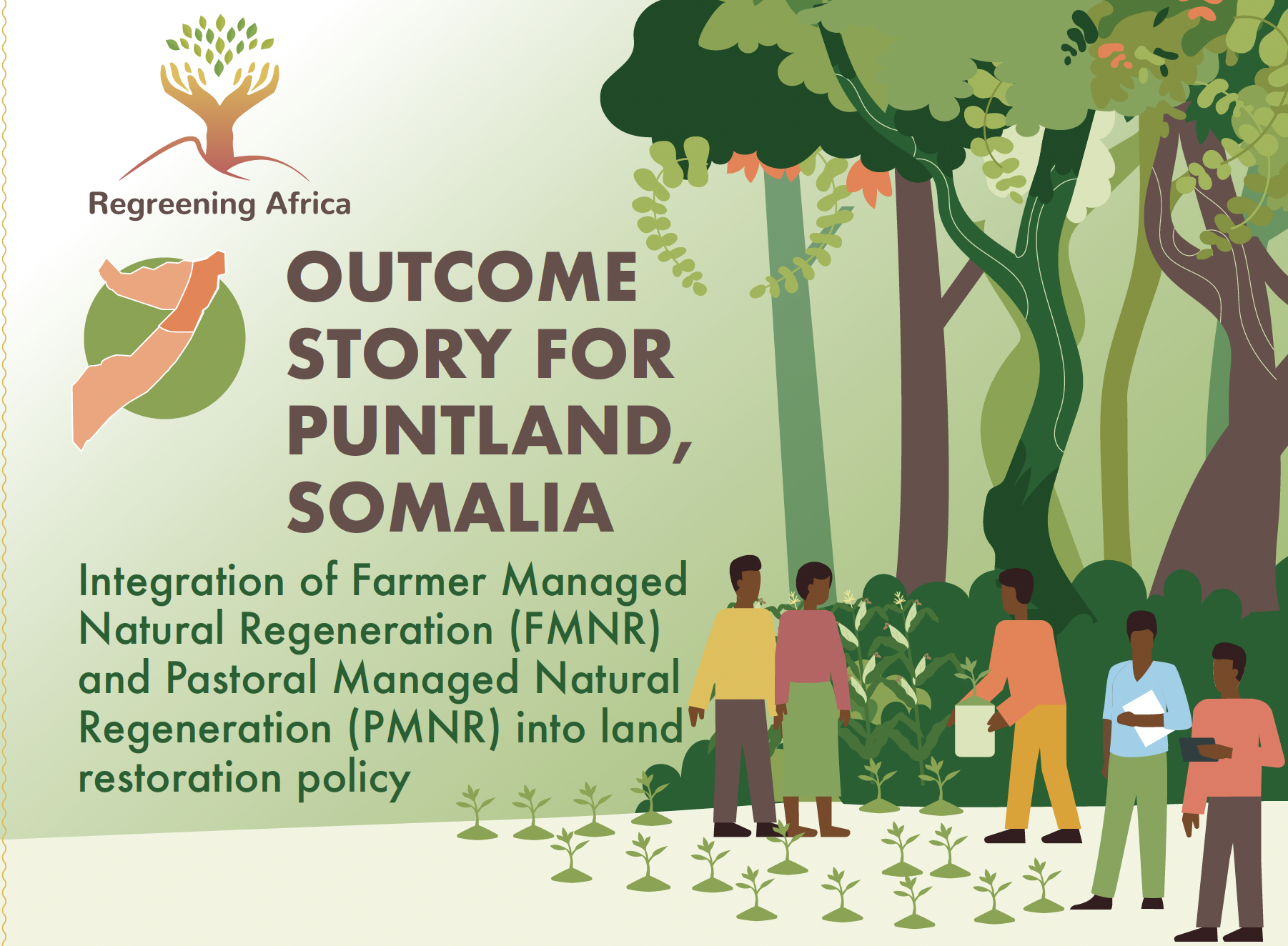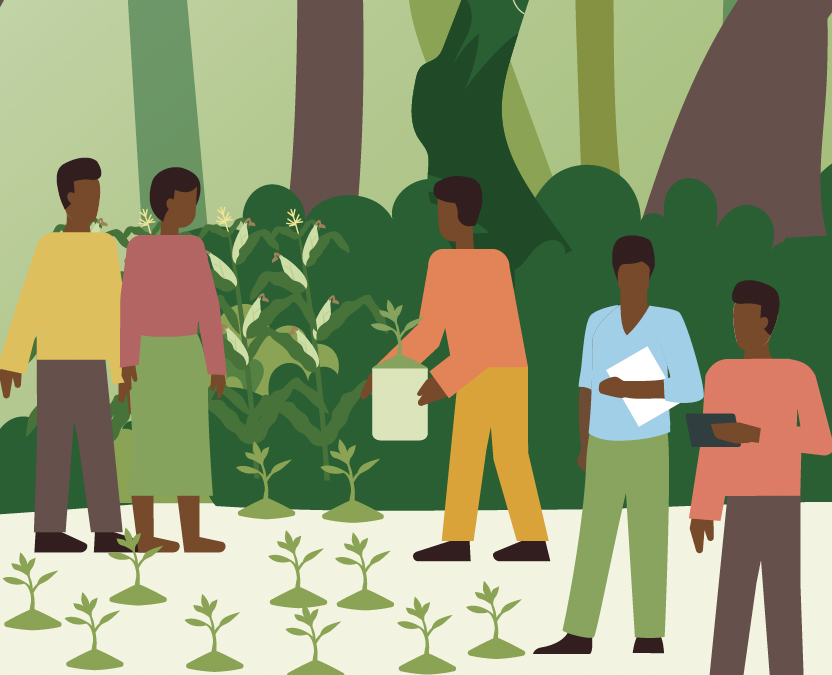Within Regreening Africa, each country team identified policy and institutional challenges they planned to address through targeted activities to shift behaviour of stakeholders. Each year activities were undertaken and assessed to see the changes taking place. Outcome mapping was used to track the process.
Niger has considerable experience with Farmer Managed Natural Regeneration (FMNRi) (Reij and Garrity, 2016, Tougiani et al., 2023) and the successful restoration it has brought to landscapes in different regions, including Zinder and Maradi, where at least five million hectares have been restored (Reij et al., 2009). Despite this success, the country did not have any legislation or policies in place that defined how farmers would use the regenerated resources (ICRAF, 2020). Through discussions and consultation in workshops and meetings, a presidential decree was developed, defining how farmers could benefit from FMNR to the fullest. The Presidential Assisted Natural Regeneration (ANR) Decree of 30th July 2020 gave greater use rights to land managers over regenerated areas under FMNR in Niger. With the decree in place, the Republic of Niger became one of the first countries globally to adopt a presidential decree supporting FMNR. The decree was made possible through the efforts of many stakeholders, including the Regreening Africa programme, which has supported land restoration activities in the country.
Le Niger a une expérience considérable de la régénération naturelle assistée (RNAi) (Reij et Garrity, 2016, Tougiani et al., 2023) et de la restauration qu’elle a réussi à apporter aux paysages dans différentes régions, y compris Zinder et Maradi, dont au moins cinq millions d’hectares ont été restaurés (Reij et al., 2009). Malgré ce succès, le pays ne disposait d’aucune législation ou politique définissant les modalités d’utilisation des ressources régénérées par les agriculteurs (ICRAF, 2020). Les discussions et les consultations menées dans le cadre d’ateliers et de réunions ont abouti à l’élaboration d’un décret présidentiel définissant la manière dont les agriculteurs pourraient tirer le meilleur parti de la RNA. Le décret présidentiel sur la régénération naturelle assistée (RNA) du 30 juillet 2020 a accordé des droits d’utilisation plus importants aux gestionnaires fonciers des zones régénérées dans le cadre de la RNA au Niger. En mettant en place ce décret, la République du Niger est devenue l’un des premiers pays au monde à adopter un décret présidentiel soutenant la RNA. Ce décret a été adopté grâce aux efforts de nombreuses parties prenantes, dont le programme “Reverdir l’Afrique”, qui a soutenu les activités de restauration des terres dans le pays.
You can read more about this policy shift here in ENGLISH and FRENCH
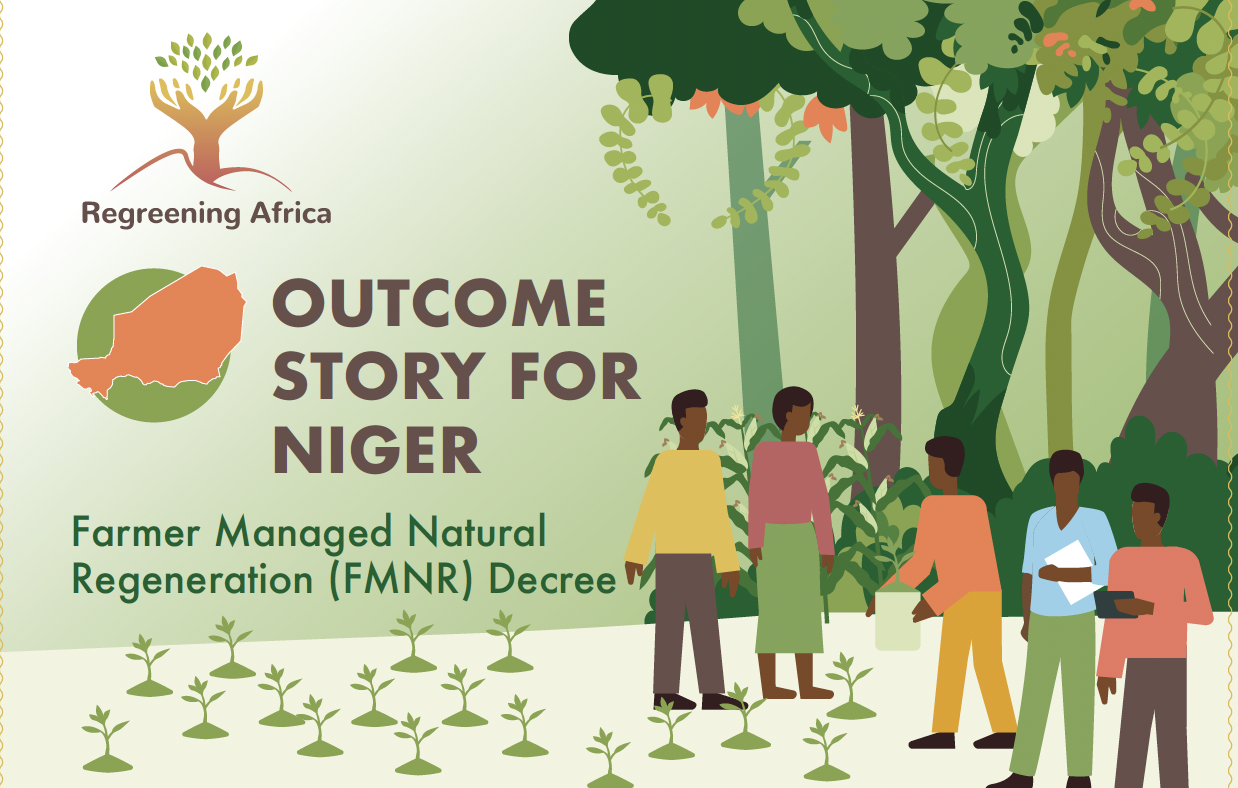
In Senegal, there is a growing interest in nature-based solutions to combat land degradation, improve livelihoods, and adapt to climate change. Sustainable agriculture, forestry, fishing, and livestock herding play a vital role in achieving these goals, especially for the rural population, which accounts for over 61% of the country’s population. However, various pressures on land, tree resources, and water, coupled with weak or absent local governance frameworks, have led to conflicts between farmers and herders. Pastoralism management has emerged as a challenge to land restoration efforts (Regreening Africa, 2022), including through Farmer Managed Natural Regeneration (FMNR). Additionally, pastoralists and their animals, settled as guests in one village, can cause damage in neighbouring villages by cutting trees and destroying crops, without a formalised communication channel to mitigate potential disputes. These frequent conflicts threaten social peace in the groundnut basin.
The municipality of Touba Mbella, in the Keur Mbouki district of the Kaffrine region, is one of the largest pastoralist hosting zones in the country. To address these complex grazing issues, the Regreening Africa programme, implemented by World Vision Senegal, facilitated a participatory and multi-stakeholder process that resulted in the creation of five local committees for the integrated management of pastoralism, grazing, and agroforestry systems. These committees, consisting of village chiefs and local leaders, oversee and enforce regulations regarding the arrival and settlement of pastoralists and their flocks in the area. The committee members volunteer their services and receive support from the local government when needed. This cross-village, multi-stakeholder committee approach has proven effective in mitigating farmer-herder conflicts, promoting social peace, and incentivizing FMNR practices.
—–
Le Sénégal montre un intérêt croissant pour les solutions basées sur la nature dans la lutte contre la dégradation des sols, l’amélioration des moyens de subsistance et l’adaptation au changement climatique. L’agriculture, la sylviculture, la pêche et l’élevage durables jouent un rôle essentiel pour atteindre ces objectifs, surtout pour la population rurale, qui représente plus de 61 % de la population du pays. Cependant, les diverses pressions sur les terres, les ressources arboricoles et l’eau, combinées à des cadres de gouvernance locale faibles ou inexistants, ont mené à des conflits entre agriculteurs et éleveurs. La gestion du pastoralism peut presenter des défis aux efforts de restauration des terres (Regreening Africa, 2022), notamment par le biais de la Régénération Naturelle Assistée (RNA). De plus, à défaut d’un canal de communication formel permettant d’atténuer les conflits potentiels, les pasteurs et leurs animaux, installés en tant qu’hôtes dans un village, peuvent causer des dommages dans les villages voisins en coupant les arbres et en détruisant les récoltes. Ces conflits fréquents menacent la paix sociale dans le bassin arachidier. La commune de Touba Mbella, dans l’arrondissement de Keur Mbouki de la région de Kaffrine, est l’une des grandes zones d’acceuil de pasteurs nomades. Afin de régler ces problèmes complexes de pâturage, le programme Reverdir l’Afrique,ii mis en oeuvre par World Vision Sénégal, a facilité un processus de dialogue participatif et multipartite qui a abouti à la création de cinq comités locaux pour la gestion intégrée des systèmes de pastoralisme, de pâturage et d’agroforesterie. Ces comités, constitués de chefs de village et de dirigeants locaux, supervisent et appliquent les réglementations relatives à l’arrivée et à l’installation des nomades et de leurs troupeaux dans la région. Les membres du comité offrent leurs services bénévolement et reçoivent le soutien du gouvernement local si nécessaire. Cette approche de comité inter-villages et multi-acteurs s’est avérée efficace pour apaiser les conflits entre agriculteurs et pasteurs, pour favoriser la paix sociale en encourageant les pratiques de la RNA.
You can read more about this local governance change here in ENGLISH and FRENCH
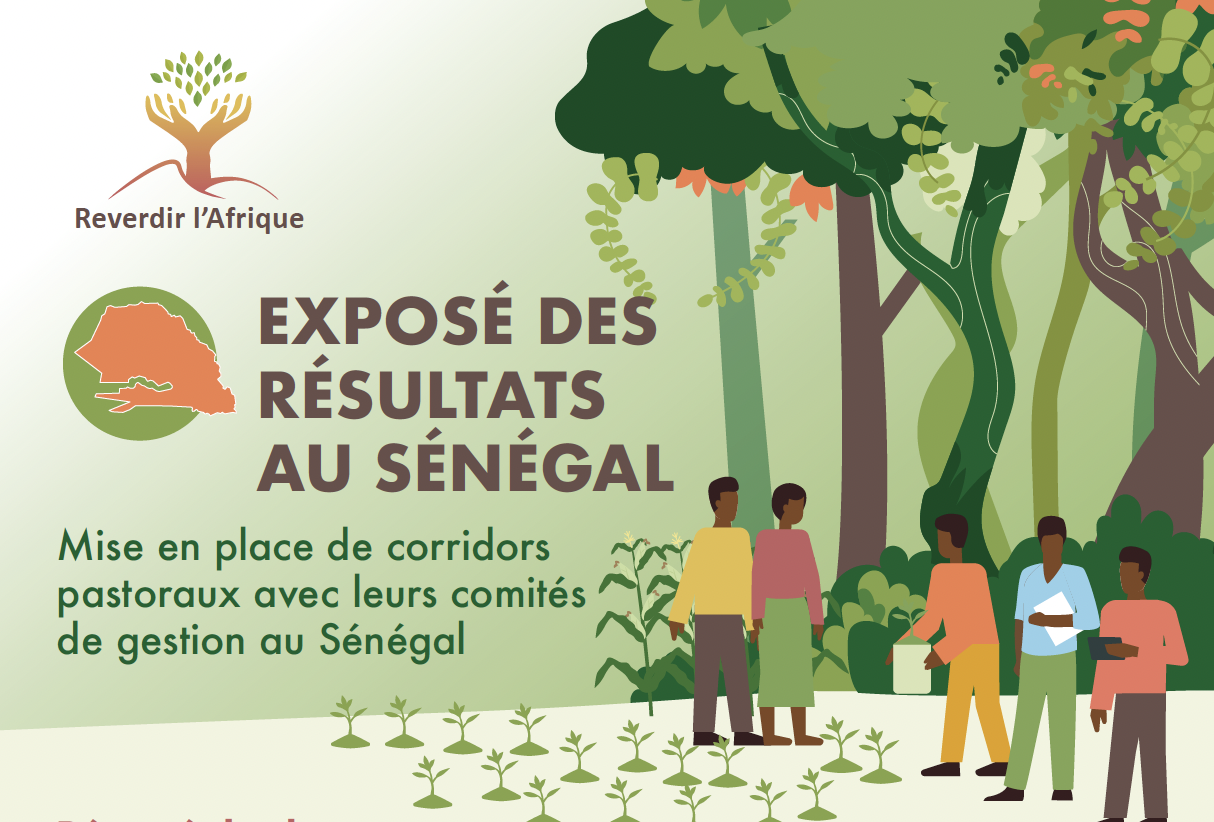
In Mali, women and youth play a significant role in land restoration and the development of agroforestry value chains. However, they face challenges related to access and ownership of land resources, as they often operate on family or communal land. To ensure equitable benefit sharing from restored ecosystems, it is essential to address the issue of women’s access to land. In response, the Regreening Africa programme and its partners have engaged in advocacy with local authorities, resulting in the acquisition of 30 two-hectare plots for 30 women’s associations. These associations have received land registration certificates from local authorities, officially recognising these areas as their agroforestry parks where food trees such as shea, parkia, and moringa are grown.
Au Mali, les femmes et les jeunes jouent un rôle important dans la restauration des terres et le développement des filières agroforestières. Cependant, ils sont freinés dans leur accès à la terre et à la propriété des ressources foncières, car ils travaillent souvent sur des terres familiales ou communales. Pour garantir un partage équitable des bénéfices tirés des écosystèmes restaurés, il est primordial de régler la question de l’accès des femmes à la terre. Ainsi, le programme Reverdir l’Afriquei et ses partenaires se sont-ils engagés dans un effort de plaidoyer auprès des autorités locales ayant abouti à l’acquisition de 30 parcelles de deux hectares au profit de 30 associations de femmes. Celles-ci ont reçu des autorités locales des certificats cadastraux, attestant légalement que ces zones constituent leurs parcs agroforestiers où sont plantés et entretenus des arbres fruitiers tels que le karité, le parkia et le moringa.
YOU CAN READ MORE ABOUT THIS LAND RIGHT CHANGE HERE IN ENGLISH AND FRENCH
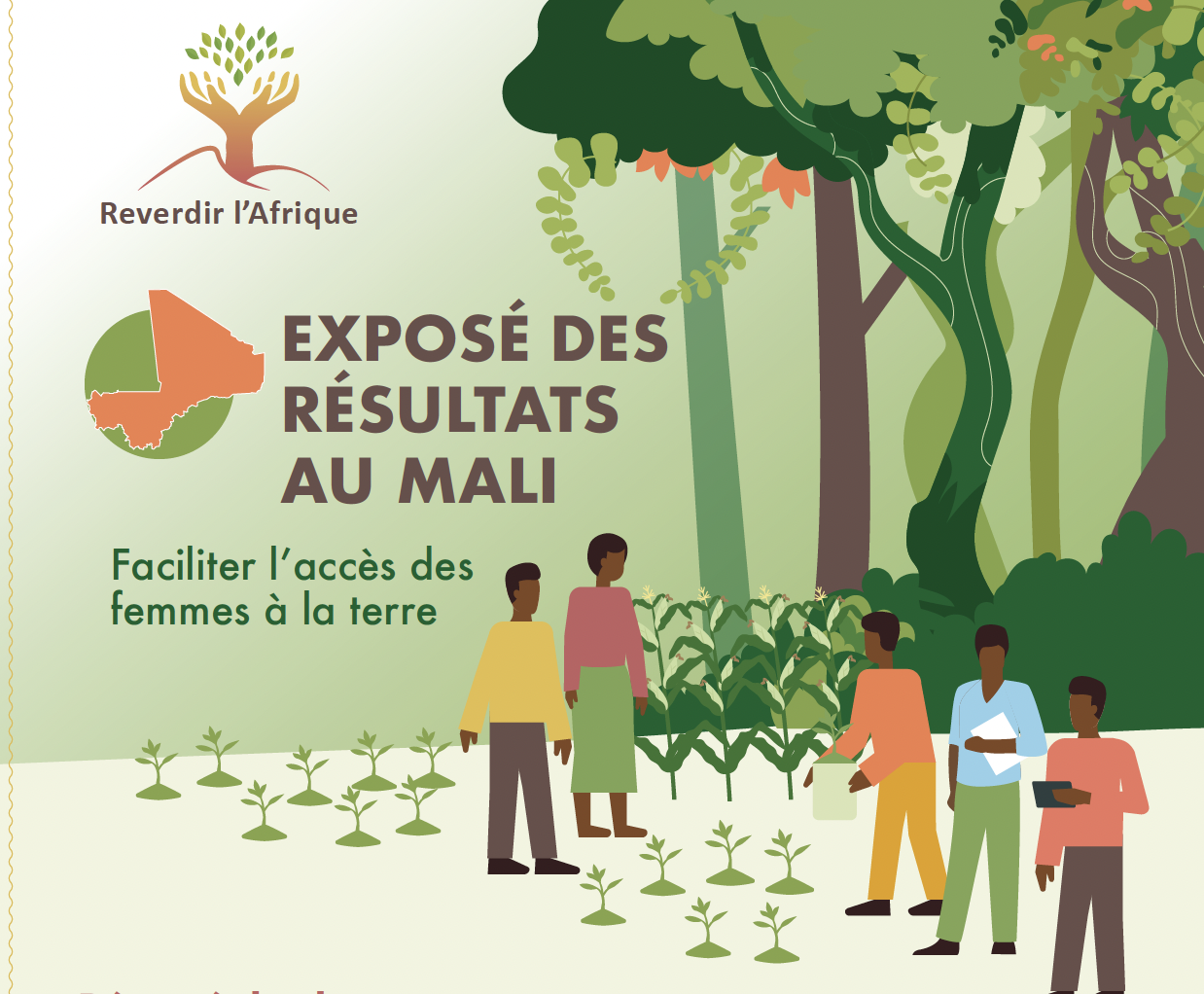
Rwanda, as the first African country in 2011 to declare an ambitious land restoration target of 2 million hectares of degraded land by 2030 under the Bonn Challenge and the African Forest landscape Restoration Initiative (AFR100), has recognised agroforestry as a key approach to achieve this goal. However, the development of agroforestry has faced challenges due to factors such as insufficient investment, coordination issues, and ineffective dissemination approaches (Gassner and Dobie, 2022). To address these challenges and support agroforestry development, the government adopted a national agroforestry strategy and action plan (2018-2027). To operationalise this plan, the establishment of an Agroforestry Task Force was necessary. World Agroforestry (ICRAF), through the Regreening Africa Programme and Trees on Farms for Biodiversity project, took the lead in supporting the establishment of the task force in collaboration with government partners, non-governmental organisations (NGOs), civil society, and community-based organisations. The task force includes multiple organisations and sectors to ensure effective coordination and harmonisation of agroforestry interventions and investments. This policy coordination outcome is significant as it institutionalised agroforestry in public policy and national land restoration interventions, potentially attracting more investment and benefiting farmers and communities.
READ MORE ABOUT THIS COORDINATION CHANGE HERE
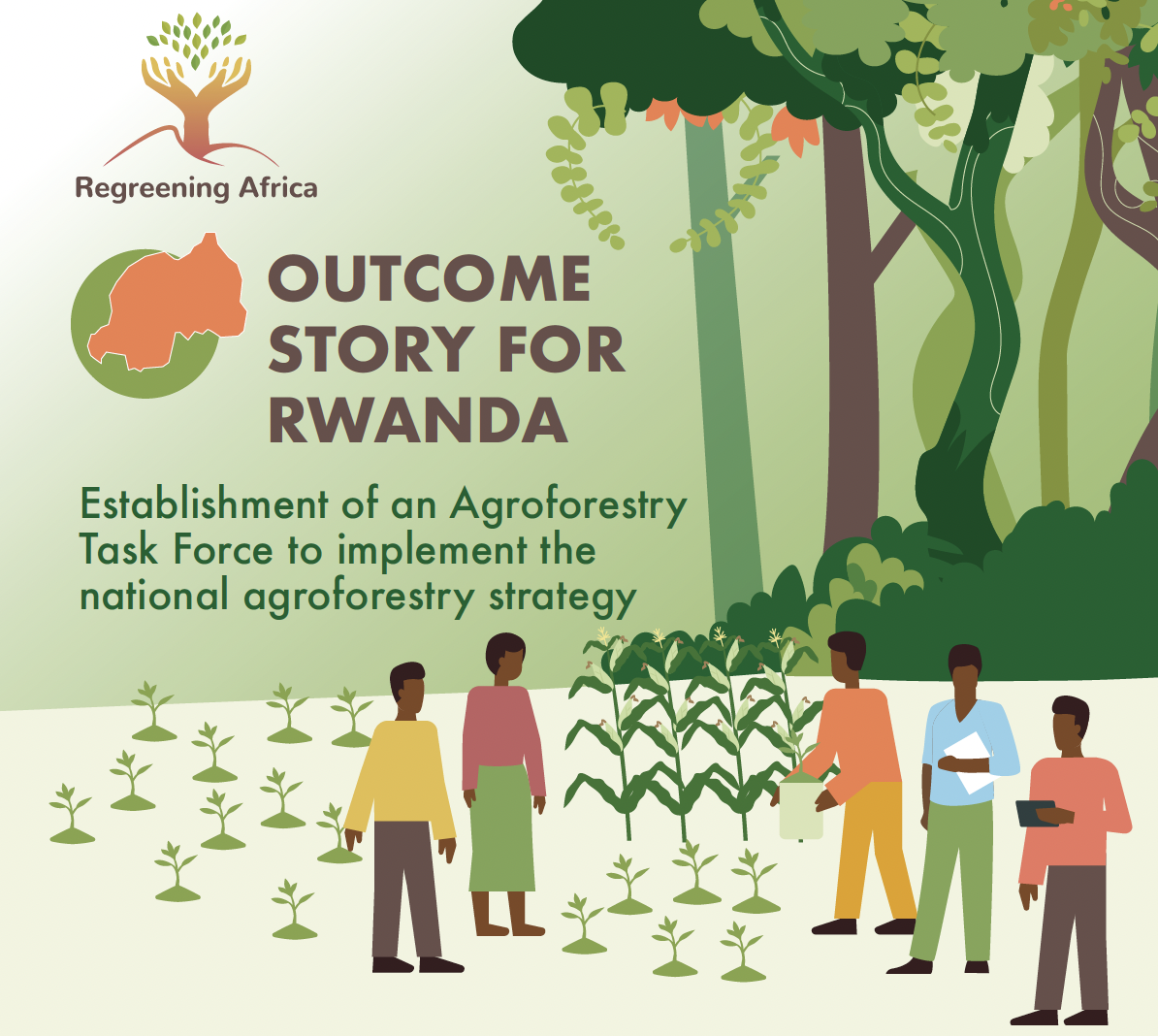
The Mion District Assembly was established in 2012 with the vision of maintaining a clean and environmentally friendly district where both women and men have access to quality and sustainable health services, education, economic resources, and the right to participate in decision-making processes. To achieve that vision, the Mion District Assembly developed the Mion bylaws, which address environmental concerns in the district. These bylaws, consisting of twenty-eight sections, were adopted and officially published in the Local Government Bulletin on Friday, 1st November 2019, covering issues such as Environmental Health and Development Control. Despite the existence of these bylaws, human activities in the district continued to contribute to environmental degradation. To combat this, the Mion District Assembly, with the support of Catholic Relief Services (CRS) through the Regreening Africa programme, initiated inclusive platforms for the development and promotion of sustainable environmental management in the district. As a result, the Mion District Environmental Management Committee was formed to implement and enforce the environmental bylaws, focusing on three major sections of the Mion bylaws:
1. the control of forest and tree cutting, section two;
2. the control of charcoal processing, section six; and
3. the bush fire management, section thirteen.
READ MORE ABOUT THE BYLAW CREATION HERE
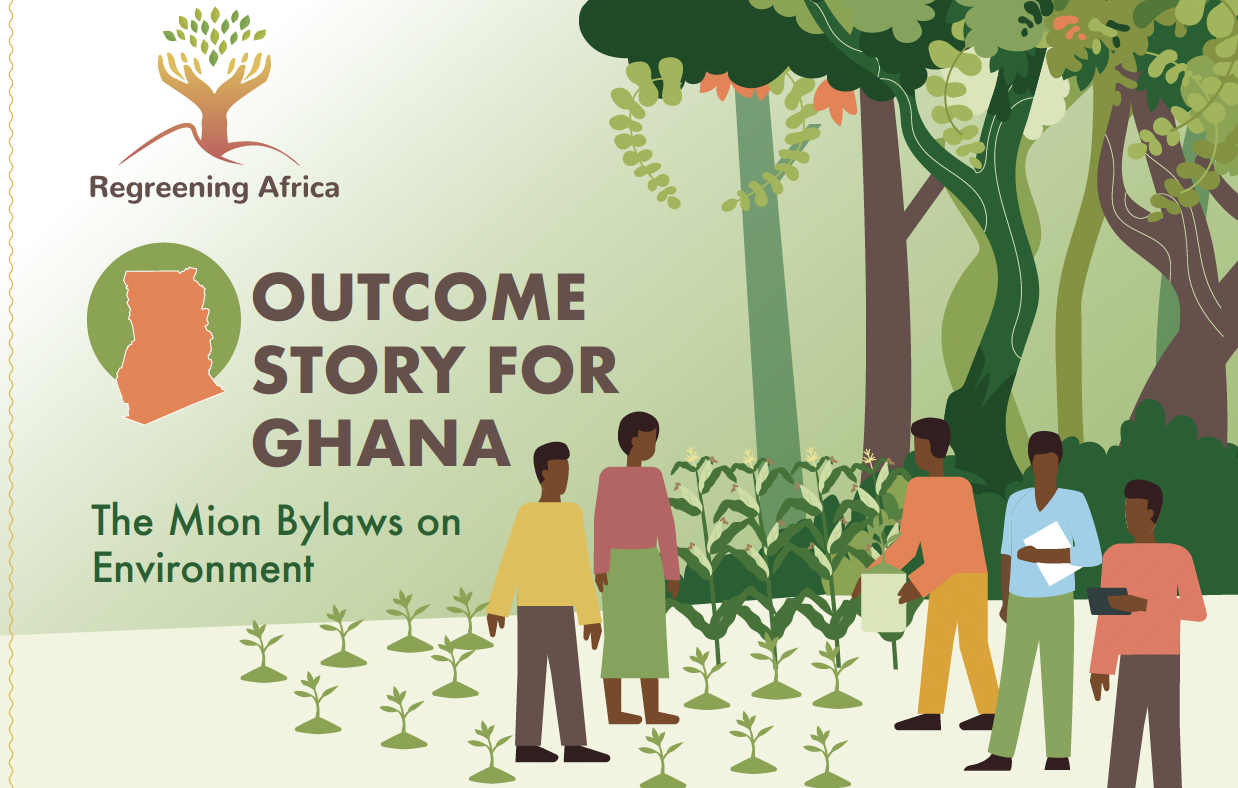
Ethiopia, a pioneer in landscape restoration in Africa, has set ambitious targets for achieving a carbon-neutral and middle-income economy by 2030. While the country has employed various approaches to land restoration, including large-scale tree planting campaigns, these efforts have faced numerous socio-economic, cultural, and ecological barriers such as low seedling survival rates in dry areas, lack of post-planting care, and limited farmer participation and ownership. To address these issues, the Regreening Africa programme and partners have successfully initiated engagements and advocacy processes for the integration of Farmer Managed Natural Regeneration (FMNR) into national and local restoration interventions led by government agencies. As a result of these engagements, FMNR has now become part of restoration campaigns initiated by key ministries, regional and district governments, as well as development agents and officials. This outcome represents a significant shift in policy, practice, and behaviours toward land restoration practices.
READ MORE ABOUT THIS CHANGE HERE
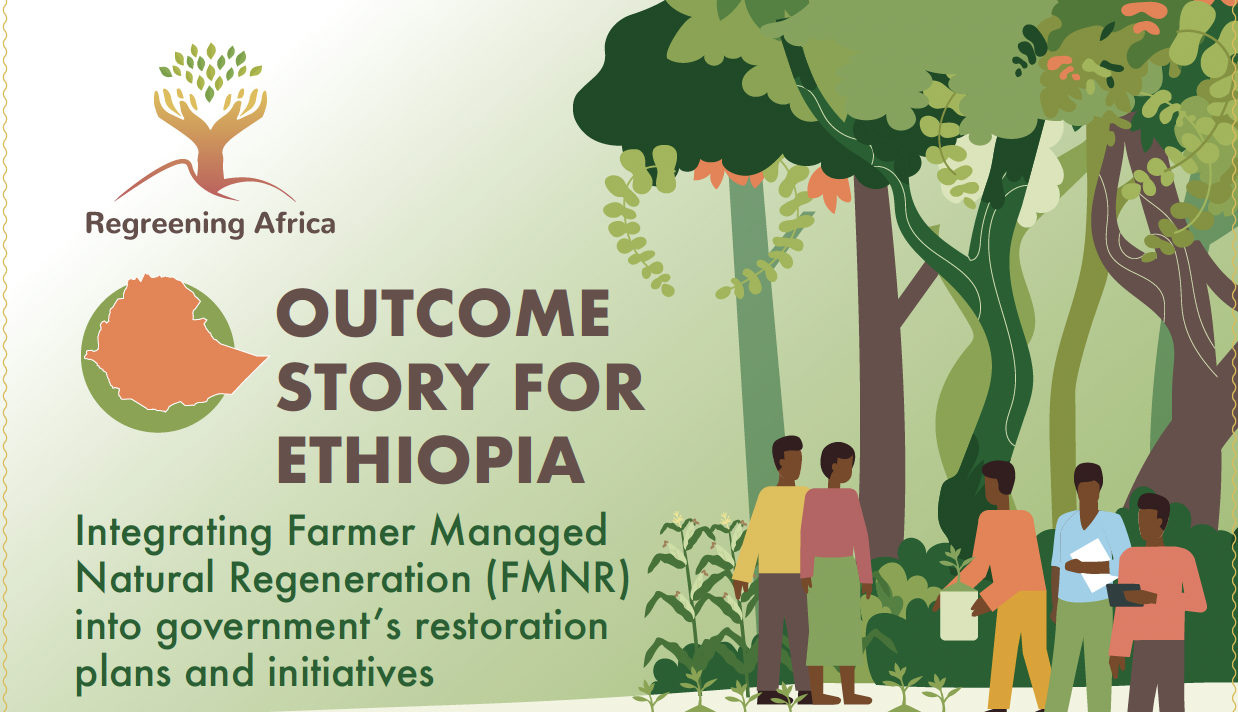
In East Africa, large-scale tree planting events are one of the main land restoration practices sponsored by governments. In dryer areas, such as Puntland State in Somalia, challenging climatic conditions make it difficult to conduct such tree planting campaigns successfully and cost-effectively. According to a Bill of Quantities (BoQ) realised by the Natural Resources Management project in Puntland in 2016, planting and fencing a single tree could nearly cost USD 100 (NRM project, 2016). Yet, Farmer Managed Natural Regeneration (FMNR), a nature inspired solution to restore degraded lands, especially in drylands is known for higher return on investment as it does not require significant labour inputs or financial investment. FMNR also presents greater chances for tree survival as the trees grow from seed in the soil or stumps, and the species are ecologically and environmentally adapted to the area. Despite these benefits, FMNR is not well integrated into the government’s environmental policies and practices. Thus, the Regreening Africa programme through its implementing partner Care initiated advocacy processes for the integration of FMNR and Pastoral Managed Natural Regeneration (PMNR) into government’s restoration policy and practice. Through sensitisation, consultative meetings, capacity building, and workshops with local communities and governmental agencies, FMNR was mainstreamed into government’s policy at all levels. At local level FMNR champions were identified, trained, and entrusted with the cascading of the practice to other farmers. To further support and sustain the FMNR mainstreaming process, a FMNR manual was produced and disseminated to various stakeholders.Integration of Farmer Managed Natural Regeneration (FMNR) and Pastoral Managed Natural Regeneration (PMNR) into land restoration policy.
TO LEARN MORE CLICK HERE
